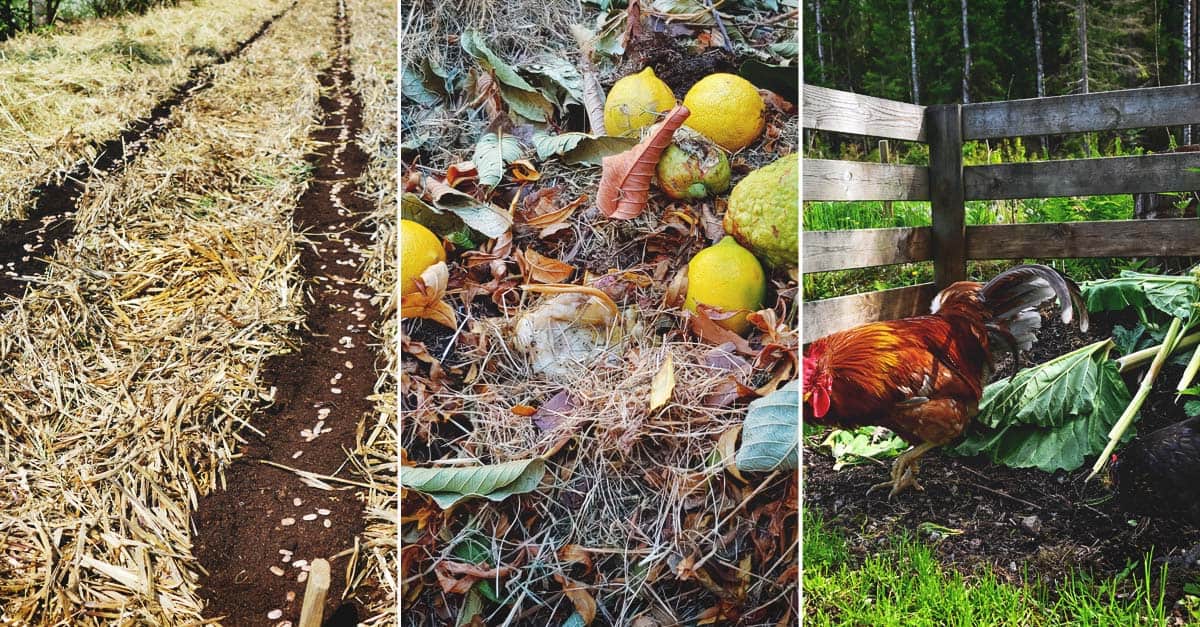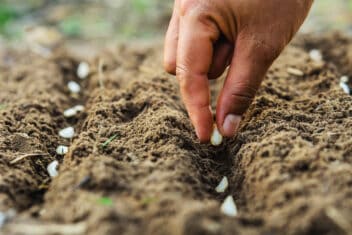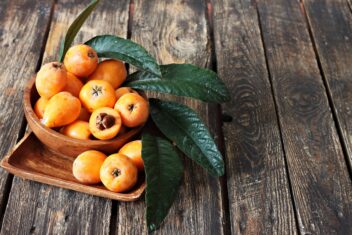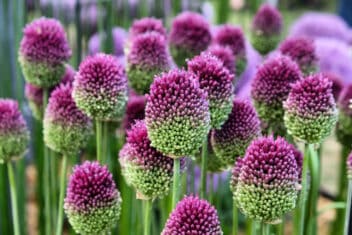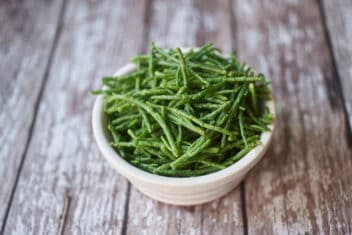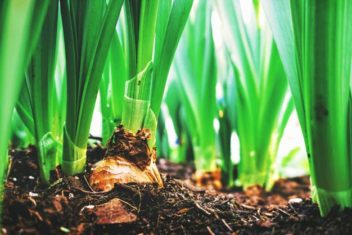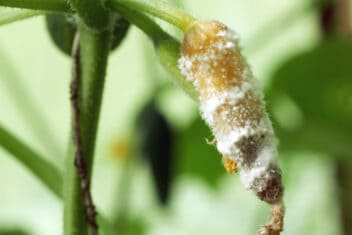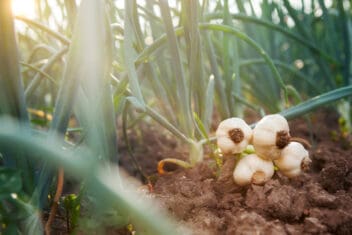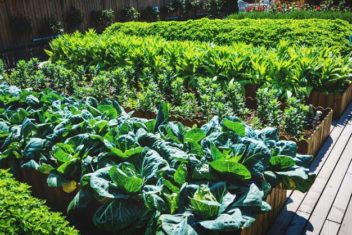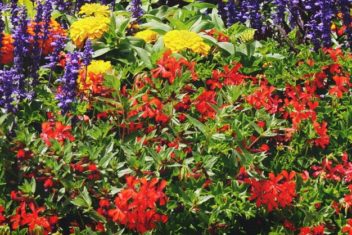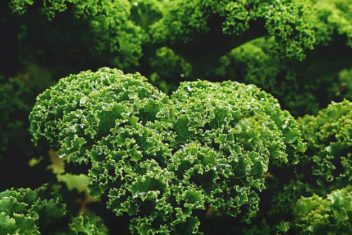Permaculture is a way of gardening that is all about creating harmony between plants, animals, and people. It’s a model of sustainability and environmental stewardship that works toward building healthy garden systems that also benefit local communities.
The word permaculture is a mash-up of permanent and agriculture, and that about sums things up. The idea is that you want to create a system that can last, rather than using temporary solutions like using petrochemicals or wiping away the biodiversity in your garden.
Forgive me if that sounds hippy-dippy, but I love the way that permaculture works. It goes beyond gardening and seeks to build an ecosystem that uses resources wisely and takes into account the needs of future generations. Permaculture can also get you one step closer to a completely self-sustaining system on your property.
So how does all of this philosophy help you when what you really want is to improve your garden and make your yard more environmentally friendly? We’ll show you four simple strategies you can use right away to start incorporating permaculture techniques into your own garden to help you save money, time and the environment.
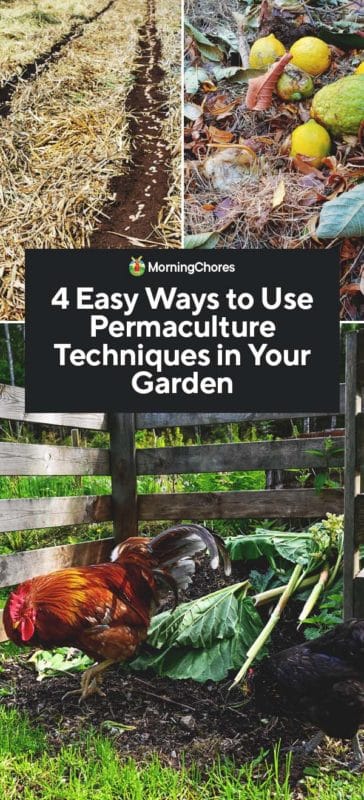
The Background of Permaculture
Permaculture traces its origins to Bill Mollison and The Permaculture Institute in Tasmania. Mollison saw permaculture as a step by step method of producing food as part of a holistic ecosystem – whether that be in your backyard or for a community.
You may have heard of permaculture being used around the world in third world countries to help poor countries develop sustainable practices. In some circles, permaculture is touted as a way to help resolve the world hunger crisis.
Today, humanitarian groups such as the United States Peace Corps and World Vision teach permaculture strategies to build gardens and schools in rural communities.
What is the Difference Between Organic and Permaculture
You may be asking yourself, “what’s the difference between organic gardening and permaculture?” Great question! Both strive to strike a harmony between agriculture and nature. Both use environmentally sound principles. But they differ in that permaculture seeks to balance all parts of the garden ecosystem.
Simply put, organic is a method of gardening without synthetic pesticides or fertilizers. Organic methods focus on using natural inputs like compost, leaves and beneficial microbes. Strategies such as crop rotation, companion planting and cover crops all contribute to a healthy garden.
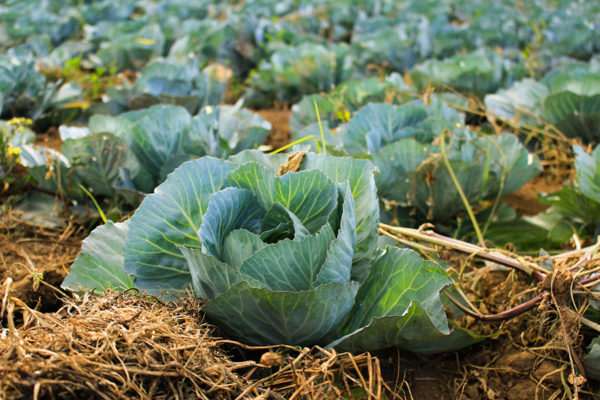
Permaculture, on the other hand, is an organic form of gardening that takes things one step further. By focusing on the integration of the garden, home, farm, and community, it seeks to find balance within a self-contained ecosystem.
For instance, permaculture focuses on closing the nutrient loop by using waste to create new nutrients. You may be doing this already when you add your animal manure, food scraps, and leaf litter to your compost pile. By using “waste” products from your farm, you are building a new source of nutrients and closing the nutrient loop.
Curious how you can implement some permaculture techniques into your own garden? The following four concepts are an easy way to get started with the system.
1. Water Control
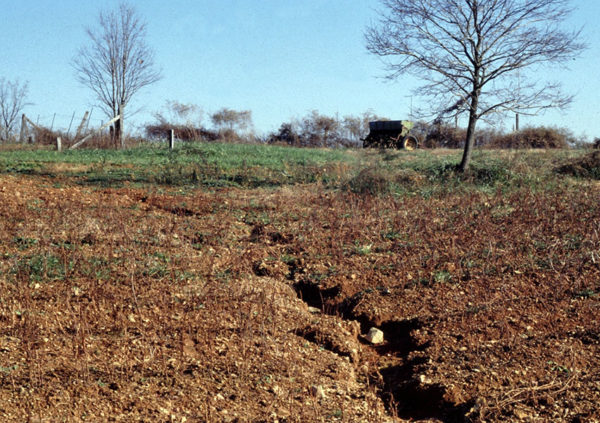
The way water flows on your property is important. The next time it rains don’t run inside. Walk around and observe the water paths in your yard. Does water pool in areas you don’t want it to or rush like a river through your garden? Does it flow down the road never to be seen again?
Make notes of the patterns and what you want to change. Then use the following methods to get water to go where you want it to.
Controlling Run-Off
Permaculture is not about growing plants in tidy rows with the sole expectation of harvesting. Instead, plant vegetables in groups on raised beds that follow a slope on a hill to eliminate run-off and erosion. Berries, lovage or asparagus all work well to protect your soil and absorb excess water.
Another way to handle run-off is to channel the water where you need it. I had issues with water running from the top of the ridge through my neighbor’s yard and coming to a big pool under my barn.
The traditional answer is to put in a French drain. I incorporated permaculture techniques by putting in a ditch that ran along the fence line, circumventing the barn and going into the field. At that endpoint, I planted several nut trees and three elderberry bushes.
Now I have water where I need it, not where I don’t, and none is wasted. You can recreate something like this in your own yard by creating a rain garden or a drainage swell.
Harvesting Rainwater
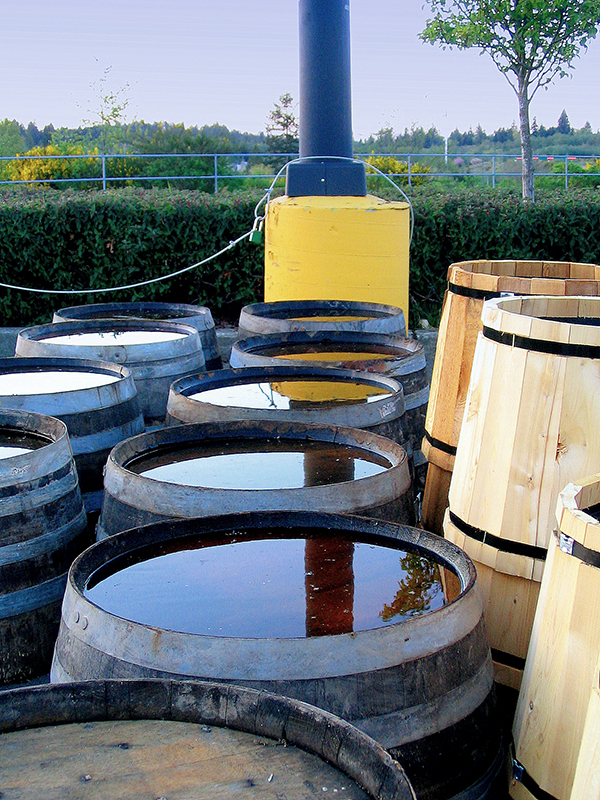
Harvesting rainwater is another permaculture facet that preserves water resources.
Like many rural areas, we don’t have access to city water on my farm, so I use gutters to carry rainwater to tanks for storage. I have rain gutters on practically every building so not a drop gets wasted.
This not only gives me water for later use, but it also keeps water from going where I don’t want it to. Instead of making little rivers under my eaves during a storm, it all goes into tanks.
Use rain barrels or other catchment systems in your garden to help capture water that might otherwise be wasted.
2. Hügelkultur
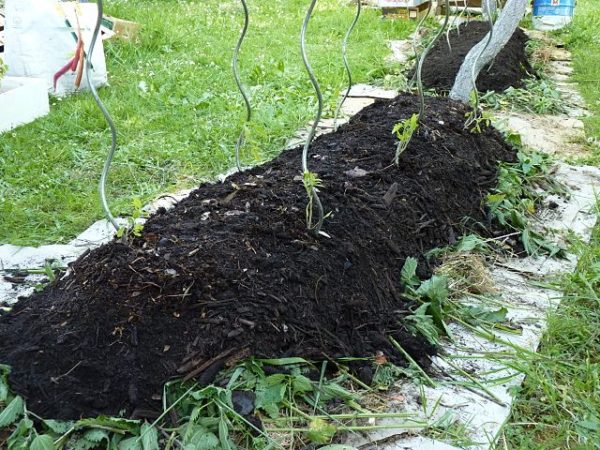
Hügelkultur is a German word that means “mound culture.”
It’s an ancient gardening technique that involves burying wood in your garden and it’s modeled after the natural decaying process on the forest floor, albeit at a faster pace.
In addition to adding nutrients, as the wood decays it soaks up water which is then released during dry spells. That makes this technique useful in areas subject to drought.
The use of hügelkultur utilizes raised beds (mounds). Decaying wood is placed in a ditch, and the soil is piled back on to make a mound. This concept often used in orchards with fruit trees and berry bushes because it improves drainage and soil nutrition.
Build a Hügelkultur Bed
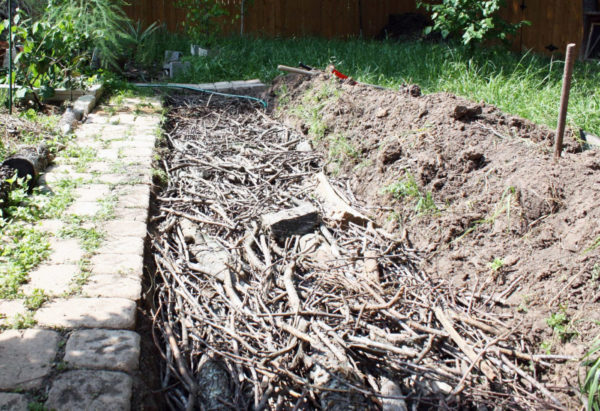
Look for untreated, raw wood around your farm, either from trees or unused construction waste. Rotting wood is excellent, but fresh cut wood works as well.
- Mark off an area 3×6 feet.
- Dig out the topsoil and place in a nearby pile.
- Add sticks, branches, small logs to your trench. Stomp it down so that its compact.
- Add bits of compost, plant waste, grass clippings, and additional soil between the gaps in the wood.
- Keep layering wood and filler material to form a pyramid shape about 3 feet tall.
- Top off your mound with a few inches of soil.
Once you have created your bed, let it settle. After a few months, the microorganisms are ready to start composting, and the soil will have compacted. Now you can plant.
Hügelkultur beds are great for vining plants that are heavy feeders like pumpkins, melons, and squashes. Soybeans, herbs, and borage are also good options.
Berry bushes thrive in hügelkultur beds. I was having a problem getting blueberries established. My heavy wet clay soil was not making my plants happy even after I amended the soil.
So I built a huge bed to allow the roots a little more room and to give them better drainage. When I was making the raised bed for my blueberries, I deliberately used plants and materials that were more acidic so that I would end up with a pH level in the happy zone for blueberries. Now I have a thriving berry patch.
Agroforestry
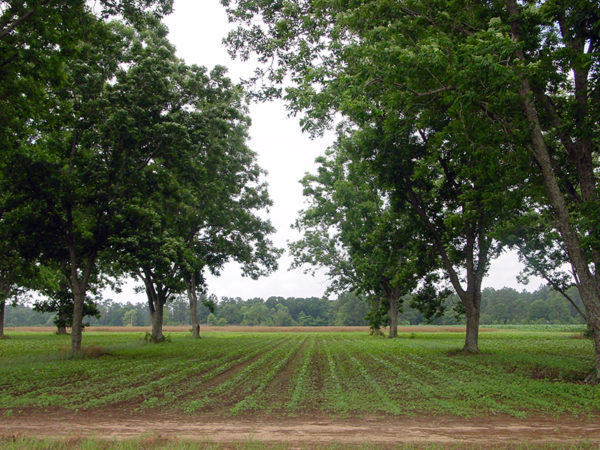
Agroforestry simply means farming the forest. In permaculture speak, agroforestry can also mean bringing forest qualities into your garden and livestock areas.
Bringing the Forest to your Garden
Adding forest areas to fields by planting trees can improve the overall ecosystem of both your farm and the forest.
Trees can provide shelter and windbreaks for livestock and can help keep sounds and odors out of the neighbor’s yard. Some trees like hazelnuts also provide food as the nuts, twigs, and leaves fall into the livestock area. If you have a large pasture area, consider planting beneficial trees in it.
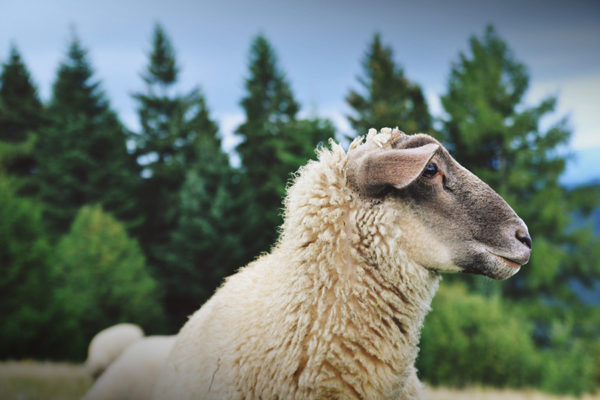
Trees can provide protected areas for crops, as well, because they help control water flow, break up clay or rocky soil, and provide homes for beneficial wildlife.
Bringing your Garden to the Forest
Forest areas can provide often overlooked opportunities for farming. Mushrooms and nuts are two common crops that grow well in forested areas. Both are good food sources for chickens and pigs, closing those nutrient loops and making your property more sustainable.
Consider planting something on the forested areas of your property to utilize the benefits of the trees. Some ideal crops include:
- Sarsaparilla
- Arnica
- Ginger
- Wild indigo
- Gotu Kola
- Chicory
- Wild yam
- Some coneflowers
- Hyssop
- Ginkgo
- Rosemary
- Valerian
- Feverfew
Domesticated Animals

Incorporating domestic animals into ecosystems is a key element of permaculture. For example, let’s look at chickens.
Many of us have our chickens off to the side of the barnyard where they have a coop and a run. But kept this way, our chickens are not participating in the ecology of our property.
Chickens have the potential to do many valuable jobs such as cycling nutrients by foraging and producing waste. They act as weed and pest maintenance, reducing the need for chemical or biological controls, and they “turn” the topsoil via their scratching behavior. Consider incorporating your chickens into the overall layout of your garden.
Another useful animal is the pig. You can use a pig tractor to let pigs prepare an area for planting. They will dig and defecate, which eliminates the need for fertilizer, pest control, and a tractor to clear the space.
Don’t neglect smaller animals in your garden, either. Bees, other insects, and fish can all be valuable additions to your homestead.
Using permaculture in your yard doesn’t have to be an overwhelming proposition. Even the smallest, most rudimentary garden can benefit from some of the concepts that permaculture champions. Are you using any of these techniques on your property? Let us know!
